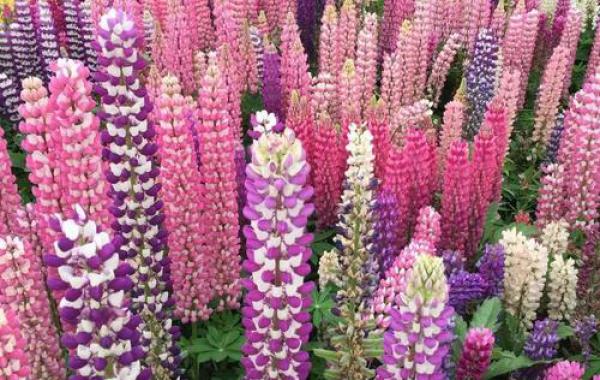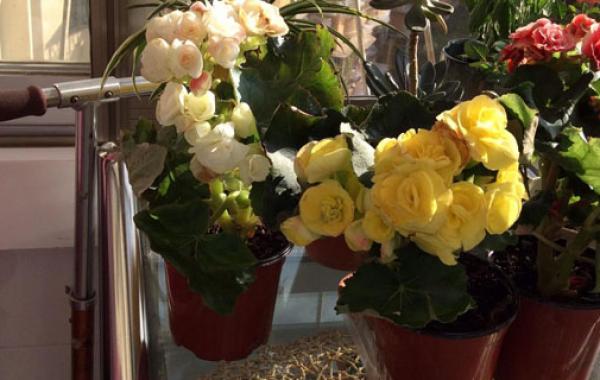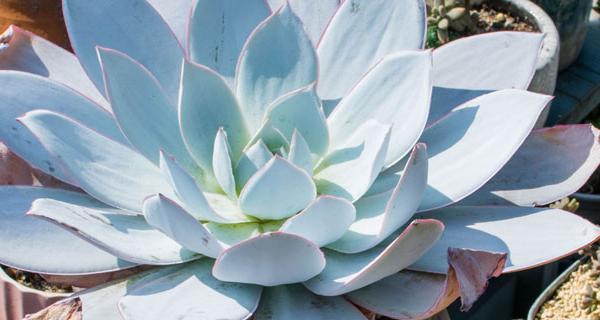How to manage flowers overwintering?

How to manage flowers overwintering.
Management skills of flowers overwintering:
Guard against cold
Penglai pine, Tianmen winter, orchid, star anise, peach leaf, coral, sunflower, kidney fern, palm bamboo, Phyllostachys pubescens, Michelia, Phyllostachys pubescens, Firethorn, camellias, Chunlan, Cymbidium, Phyllostachys pubescens, Phyllostachys pubescens, cycads, etc., placed in a simple plastic greenhouse with a temperature of not less than 0 ℃, can prevent frost injury.
Ornamental plant species with an overwintering temperature of not less than 5 ℃, such as southern fir, goose palm wood, rubber tree, jasmine, brandy, pearl orchid, pocket coconut, calla lily, spring feather, tortoise back bamboo, Jianlan, Mulan, Belgian rhododendron, triangular flower, cyclamen, primrose, five-colored plum, kumquat, daidai, lemon, loose-tailed anemone, geranium, mulberry, Buddha belly bamboo, etc., can overwinter in a double-layer plastic greenhouse.
For the species of flowers and trees requiring an overwintering temperature of not less than 10 ℃, such as variable leaf wood, taro, pepper grass, bamboo taro, rich bamboo, fishtail sunflower, Brazilian iron, rich tree, netting grass, pineapple, pink leaf, poinsettia, Cymbidium, longtuzhu, golden bract, Milan, Phalaenopsis, Cartland, Magnolia, South American iron tree, red (green) gemstone, Oncidium, tiger orchid, etc., in a double-layer greenhouse with good sealing performance It is also necessary to heat it up properly. in the particularly cold period, from 4: 00 p.m. to 9: 00 the next day, put a grass curtain on the roof of the greenhouse, and then remove it until the temperature gets warmer.
For more hardy potted and bonsai plant species, such as wax plum, plum blossom, begonia, Yingshanhong, pomegranate, elm, sparrow, oak, crape myrtle, wisteria, yellow poplar, Luohansong, triangular maple, cypress, cypress, red cypress, bayberry, wolfbone, white wax, etc., when not less than-10 ℃, generally will not be frozen, encounter particularly cold weather, and then cover with plastic film or soft grass to prevent cold.
Whether it is put in the greenhouse, greenhouse, or placed in the bedroom bonsai, potted flowers and foliage, fruit plants, in addition to maintaining the appropriate indoor temperature, but also pay attention to ventilation, can be in the highest temperature of the day around noon to open doors and windows to give ventilation, to prevent the occurrence of fallen leaves, flowers and fruits. In the ventilation, we must also pay attention not to let the cold air directly attack the plant, so as to avoid adverse reactions.
Watering
For most of the potted flowers and bonsai placed in the greenhouse, greenhouse and bedroom, the degree is to keep the basin soil moist. If the temperature is too low and too much watering, it is easy to cause rotting roots. When the temperature rises, the amount of water can be increased and proper foliar spray can be given.
For those potted flowers that blossom before and after the Spring Festival, such as camellia, tea plum, Belgian rhododendron, plum blossom, wax plum, melon chrysanthemum, primrose, longevity flower, hyacinth, European daffodil, etc., ornamental fruits such as daidai, lemon, bergamot, tangerine, golden bean, winter coral, rich seeds, Phyllostachys pubescens, etc., should not only keep the potted soil moist, but also spray the leaves to facilitate the expansion of flower buds. It can also increase the freshness of flowers and fruits.
For most foliage plants in the shelving room, we should not only keep the basin soil moist, but also spray water on the foliage surface, and always keep the foliage surface clean; for those foliage plant species that are not very cold-resistant, such as Fendai leaf, fruit taro, bamboo taro, leaf-changing wood, silver queen, etc., when the room temperature is close to the minimum temperature that they can bear, special attention should be paid to controlling the amount of water to ensure their safe winter.
The watering time in December should be 3-4 hours before and after noon, and the water temperature should be basically consistent with the air temperature and soil temperature, so as to avoid adverse reactions caused by low water temperature.
Pest control
For flowers and trees that are prone to diseases and insect pests in the leaves of grape, begonia, rose, rose, camellia, crape myrtle, etc., collecting and burning the litter under their plants can reduce the occurrence of diseases next year. At the same time, spraying stone-sulfur mixture to sterilize and disinfect the powdery mildew of potted melon and leaf chrysanthemum and Botrytis cinerea of primroses. The former is controlled by triadimefon or methyl thiophanate in time, and the latter is controlled by thiophanate methyl. for the species of scale insects that are easy to appear in the greenhouse, such as hawkdai, bergamot, cycad, camellia, one-leaf orchid, etc., you can first wipe them with a dishcloth, and then use pesticides such as quick sterilization to control them when ventilation is poor. Aphids often appear on potted plants, such as Magnolia, Milan, daidai, rose, Fujian tea, etc., which can be controlled by tobacco water. a variety of scale insects often appear on the trunk and big branches of flowers and trees such as paulownia, sweet-scented osmanthus, Fatong, camellia, lobular privet, fire thorn, oleander, begonia, magnolia, bauhinia, gardenia, cedar, heather, crape myrtle, wax plum and so on. Such as horned wax scale, Japanese tortoise wax scale, red wax scale, shield scale, sagittal scale, pink scale, velvet scale, etc., at this time with a higher concentration of quick culling, quinathion, chlorpromazine and other pesticides, rarely produce drug damage.
One. Temperature (each flower has its own low temperature tolerance limit, you can search for it):
1. For cold-resistant low-temperature, cold-temperature (5-12 ℃, 5-℃) flowers, such as pomegranate, rose, wax plum, sweet-scented osmanthus, palm, pedicel begonia and crape myrtle, can be placed in the outdoor courtyard or balcony facing the sun.
two。 Flowers that need to be kept at a medium temperature (12-20 ℃), such as Magnolia, Camellia, Azalea, Michelia, Gentleman, Golden Bell and four Seasons Begonia must be moved indoors before the temperature drops to 10 ℃.
3. For flowers that can only grow normally in high temperature (18-30 ℃), such as Milan, Fusang, jasmine, Cinnamomum mongolicum, daffodils, epiphyllum, lotus, cactus, cactus and aloe, etc., must be moved indoors before the temperature drops to 12 ℃, put the flowerpot on with a plastic bag before the temperature drops to 5 ℃, and tie the plastic bag tightly, leaving a small number of pores on the bag to facilitate ventilation. Around noon when the weather is clear and windless, move outside to bask in the sun for a few hours and then move back to the room to keep warm.
How to grow flowers in winter (overwintering management)
two。 Pruning: potted flowers should be pruned before overwintering in order to reduce nutrient consumption and indoor space during overwintering.
three。 Fertilization: apply fertilizer once and pour enough water before overwintering. When overwintering, flowers generally stop fertilizing.
four。 Watering: generally, it is necessary to keep the basin soil dry and water less. The watering time in December should be 3 to 4 hours before and after noon, and the water temperature should be basically consistent with the air temperature and soil temperature, so as to avoid adverse reactions caused by low water temperature.
five。 Ventilation: pay attention to regular ventilation, preferably in sunny days, or at noon when the temperature is high. When ventilating, we must also pay attention not to let the cold air blow the plant directly, so as to avoid adverse reactions.
six。 Beginning of spring: at the beginning of next spring, generally during the period from the Spring Equinox to Qingming Festival, overwintering flowers can be moved outdoors one after another and applied with fertilizer and water, such as bio-organic fertilizer, yellow leaf treatment, trace element water-soluble fertilizer, etc., so that flowers can grow normally in spring.
Seven. Pest control: for flowers and trees that are prone to diseases and insect pests in the leaves of begonia, roses and camellia, collect and burn the litter under their plants, which can reduce the occurrence of diseases next year. At the same time, carbendazim was sprayed for sterilization. For Botrytis cinerea of * * disease, rust and primroses, triadimefon or tocopherol can be used to prevent and cure respectively. When there is poor ventilation, aphids often appear on potted plants, such as Magnolia, Milan and so on. Imidacloprid can be used for control. For scale insects, of course, it is necessary to use targeted scale control.
In winter, we must carefully manage some shallow landscape bonsai and tree stump bonsai. To prevent frostbite in basin soil, 2. Prevent the disintegration of artificially cemented rocks from freezing, 3. To prevent plants planted on rockery from freezing or drying to death. It can be placed in an ice-free place and watered regularly so that it can survive the winter safely.
Related
- What if the leaves of potted flowers turn yellow?
- Florescence Control of several Flowers
- Anti-freezing technology and post-freezing nursing technology of flowers
- What is the classification of flowers? What are the common methods of flower classification?
- Prevention and control of alkali and acid damage of flowers in courtyard
- Technology of Anti-freezing and restoring growth of Flower seedlings in greenhouse and greenhouse
- How does flower fertilization not hurt the root? Fertilization technology of flowers
- Key points of disinfection in flower greenhouse
- Several pesticides that are banned or used cautiously in flowers
- How to fertilize the flowers that watch the leaves?



